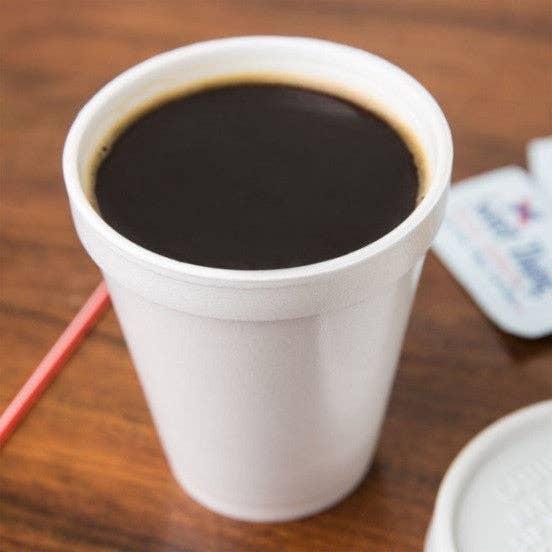
It was a cool morning at the airport, and I had just exited the FBO lounge to walk onto the ramp. My left hand held the keys to my hangar's door, and my right hand cradled a three-quarter-full cup of airport coffee—the communion drink of drowsy pilots.
There is a certain squint that experienced pilots put on their faces as they put the cup to their lips for the first sip of the day. Kind of a furrowed brow look with pursed lips that says, "I am not sure if this coffee is cold, hot, horrible, or OK."
My coffee squint was tight, and my eyes were almost closed because the sun was directly on my aging face. Because I had not yet donned my prescription bifocal sunglasses, my peepers were too overwhelmed by the light to give me a chance to avoid Frank, who approached quickly, like an adept fighter pilot—high and out of the sun.
Every airport has a Frank. They are a lifeform, much like creeping basement wall mold or those little salamanders that run out of the wet places in your yard. They are probably necessary in the web of life, but you can't figure out why and don't want to interact with them.
They have a few easily recognizable traits that include bragging about how much their airplane cost, denigrating other pilots whether they know them or not, playing irritating talk radio opinion shows way too loud in their hangars, and not being kind to the line crew and other team members at the airport.
Oh, and did I mention that your average airport Frank knows everything about flying and is eager to show off their knowledge by haranguing innocent pilots like me who only want to drink their damn coffee in peace?
During the past few interactions I had with Frank, I had to endure his discussion of how much he, his insufferable wife and bratty kid spent last month during their flying vacation to the Bahamas, along with an even more uncomfortable series of comments denigrating all air traffic controllers from here to Bimini for their oafishness and stupidity.
I decided to mount a talkative counteroffensive by grabbing the discussion by the ankles and metaphorically flipping it on its head.
Frank began with a quick and loud "Hey," and I cut him off at the conversational pass.
Is there anything more vital to the world of aviation than airport coffee? I began.
Frank shifted uncomfortably but wanted to hang in there to overwhelm me and get his point across eventually.
I would not allow it. Not today.
Yes, I continued, coffee has been an integral part of airport life ever since Wilbur and Orville hand-tossed some ground beans into a big pot of boiling water on a beach bonfire in North Carolina.
Rumor has it that, as the history books say, they did not really have to flip a coin to see who would fly first. Orville went first because Wilbur had drunk six cups of coffee and was off behind the dunes, draining the main.
You can have any kind of aviation coffee, I said. They all have different traits, but each kind makes up the mosaic of hot, stimulating beverages for aviation.
Frank looked at his very expensive watch and shifted his weight, looking uncomfortable.
The first, of course, is the coffee from vending machines you can find at almost any flight school or training center. This brew can be identified by the small uninsulated paper cups, which often have a poker hand pictured on them. This coffee is watery and rank, but you drink it anyway because you have a checkride that day and want to stay alert.
Next up on the scale of aviation java is the do-it-yourself coffee brewer you find in your layover hotel room when you are an airline pilot. The machine will turn out a cup of hot liquid that resembles coffee, but only in that it is dark and bitter.
You really want a decent cup to start your day, but pickup is at 4 a.m., and real coffee is unavailable until you fire up the galley in your bird and brew.
Frank was about to answer my question and opened his mouth to speak, but I got there first.
Galley coffee, son. I'm talking about galley coffee. This is the stuff made in those metal pot machines that suck potable water out of your plane's festering water tank and combine it with the cheapest coffee filter pack your airline thinks it can get away with.
The key to galley coffee, I say, is to put two pillow packs of coffee in the filter drawer. The stuff isn't any better, but it is too strong to argue with and will give you the mental energy jolt you need to begin the before-start checklist.
Frank was walking away, but I wanted to add a few coffee facts to ensure he would never, ever approach me on a ramp again.
Yes, I almost shouted. The funny thing about galley coffee is the flat-ended stirrers they give you for your cream and sugar. They were first used in the 1980s, and the spoon end was flat to keep us from snorting cocaine—you know, Bolivian marching powder, Florida snow, devil's dandruff.
I was going to finish my harangue by asking Frank if he was up to date on his contributions to the coffee fund donation box in the FBO lounge. Feeling like a jerk for verbally attacking him that way, I was going to ask him if he was interested in coming over to my humble T-hangar for a cuppa.
It was too late. He swooped in on another sun-blinded ramp dweller and was, even now, weaving a soul-killing web of talk about his new robot tug and how stupid the line crew is.






